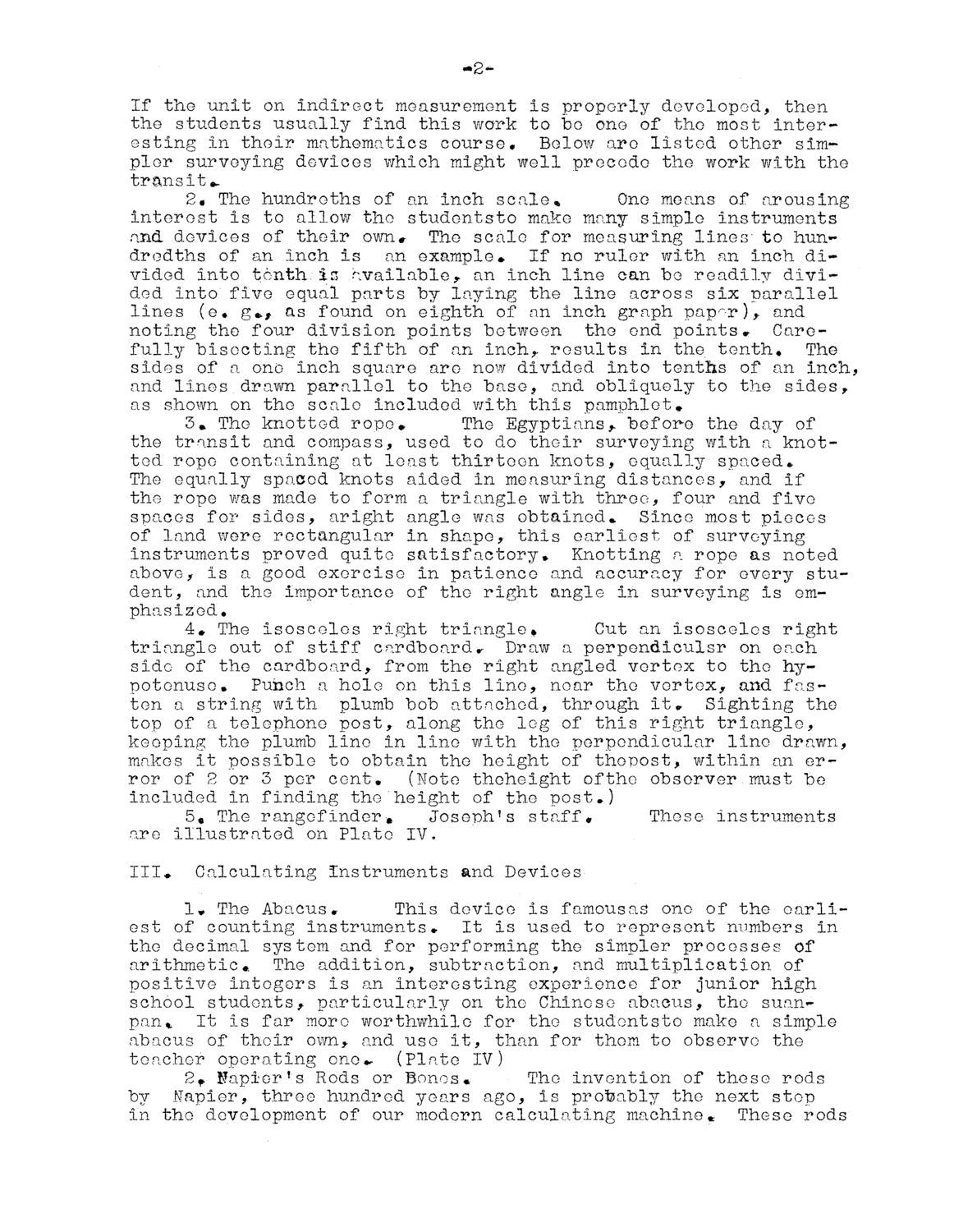| |
| |
Caption: Mathematical Models Construction and Use of Mathematical Models (Fehr & Hildebrandt)
This is a reduced-resolution page image for fast online browsing.

EXTRACTED TEXT FROM PAGE:
-2- If the unit on indirect measurement is properly developed,, then the students usually find this work to be one of the most interesting in their mathematics course, Below are listed other simpler surveying devices which might well precede the work with the transit*. 2« The hundroths of an inch scale * One means of arousing interest is to allow the studentsto make many simple instruments and devices of their own* The scale for measuring lines' to hundredths of an inch is an example* If no ruler with an inch d i vided into tenth;in available* an inch line can be readily divided into five equal parts by laying the line across six parallel lines (e* g*.* as found on eighth of an inch graph p a p ~ r ) * and noting the four division points between the end points* Carefully bisecting the fifth of an inch,, results in the tenth* The sides of a one inch square are now divided into tenths of an inch, and lines.drawn parallel to the base, and obliquely to the sides, as shown on the scale included with this pamphlet* 3* The knotted rope* The Egyptians,, before the day of the transit and compass, used to do their surveying with a knotted rope containing at least thirteen knots, equally spaced* The equally spaced knots aided in measuring distances, and if the rope was made to form a triangle with throe, four and five spaces for sides, aright angle was obtained* Since most pieces of land were rectangular in shape, this earliest of surveying instruments proved quite satisfactory* Knotting a rope as noted above, is a good exercise in patience and accuracy for every student, and the importance of the right angle in surveying is emphasized • 4* The isosceles right triangle* Cut an isosceles right triangle out of stiff cardboard*- Draw a perpendiculsr on each side of the cardboard, from the right angled vertex to the hypotenuse* Punch a hole on this line, near the vertex, and fasten a string with plumb bob attached, through it* Sighting the top of a telephone post, along the leg of this right triangle, keeping the plumb line in line with the perpendicular line .drawn, makes it possible to obtain the height of thopost, within an error of 2 or 3 per cent. (Note theheight ofthe observer.must be included in finding the height of the post*) 5, The rangoflnder* Joseph1s staff* These instruments are illustrated on Plate IV. Ill* Calculating Instruments and Devices 1* The Abacus* This device is famousa& one of the earliest of counting Instruments* It Is used to represent numbers In the decimal system and for performing the simpler processes of arithmetic* The addition, subtraction, and multiplication of positive Integers is an interesting experience for junior high school students* particularly on the Chinese abacus, the suanpan* It is far more worthwhile for the studentsto make a simple abacus of their own* and use it, than for them to observe the teacher operating one*- (Plate IV) 2* $apier!s Rods or Bonos* The invention of these rods by Napier, three hundred years ago, Is probably the next step in the development of our modern calculating machine* These rods
| |